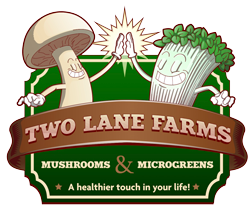FAQ
Perhaps you’ve heard about microgreens recently, and now you’re curious why people are getting so excited about these tiny edible plants. Or maybe you’re already aware that microgreens are a great way to add more plant-based nutrients to your diet, but you’re unsure where or how to start with them.
Depending on the stage of development of an edible plant, we give it a different name. Sometimes we eat them as seeds (grains), some right after they germinate and before they have leaves (these are called sprouts), and if we let them grow a little longer (typically 1-2 weeks) then these baby plants become what is commonly referred to as ‘microgreens’. Microgreens are typically harvested after they have formed a pair of starter leaves, though sometimes they’ve also just started to put out their “adult” leaves. Another term you may encounter is “shoots” – which basically translates to “large microgreen” and is used for plants where the seedlings are larger, like peas and beans.
Yes. According to the FDA, you should “wash all produce thoroughly under running water before preparing and/or eating, including produce grown at home or bought from a grocery store or farmers market.”
The main health benefits of microgreens include: Microgreens are incredibly nutrient-dense – meaning they are concentrated sources of vitamins, minerals, and antioxidants. Compared to their adult counterparts, they contain up to 40x the vitamins and a broader spectrum of antioxidants Microgreens are suitable to eat raw which helps them retain their nutrients, as the high heat in cooking can destroy enzymes, vitamins, and phytonutrients When homegrown, they’re fresh! As soon as any plant is harvested, it starts decomposing and losing its nutrients and health benefits. For example, spinach loses 90% of its Vitamin C within 24 hours of harvesting.
Neither. Mushrooms are fungi, which are so distinct in nature they are classified as their own kingdom – separate from plants or animals. While commonly placed in the vegetable category for dietary recommendations, mushrooms are, however, not a vegetable based on their cellular organization and composition such as chitin and ergosterol.
Yes. According to the FDA, you should “wash all produce thoroughly under running water before preparing and/or eating, including produce grown at home or bought from a grocery store or farmers market.”
